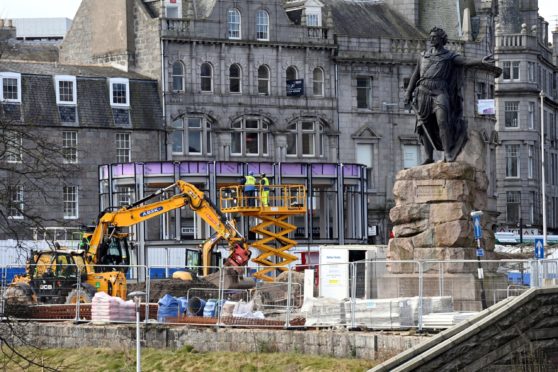The construction industry in Scotland has recovered strongly from Covid-19 with a predicted 26,250 extra jobs to be created by 2025 according to a new study.
But concerns have been raised that a lack of materials, equipment and skills shortage could put that growth at risk.
Research from the Construction Industry Training Board (CITB) shows the Scottish sector is expected to grow by an annual average rate of 4.1%, and recovering to pre-pandemic growth levels by 2023.
While this news has been welcomed, there’s some concerns with businesses across the north-east unable to get hold of valuable materials and equipment to allow them to carry out and complete jobs. Meanwhile, another report found that employers are struggling to find workers with the skills to complete a significant pipeline of jobs.
Lack of materials leads to snowball effect
JMS Equipment, based in Aberdeen’s Blackdog, last month completed a substantial sale with the purchase of five Takeuchi excavators by James Jamieson Construction worth £500,000 in a move described as a “major boost”.
However, Iain Riddoch, managing director of the company, said is well aware of the challenge facing the industry just now.
He said: “It’s hard times at the moment getting stock in.
“Everything looks good if you can get the equipment. But the country could come to a standstill if we don’t get materials here.
“Everybody is starting to suffer. It’s the same thing going on throughout the country.
The next step will be to start laying people off because they can’t get the materials.”
Iain Riddoch, JMS Equipment managing director
“Timber went up 50% and you can’t get any cement. So if you can’t get any cement you haven’t got bricklayers.
“And what are the joiners going to go if they can’t get any timber.
“The next step will be to start laying people off because they can’t get the materials.”
Construction workforce numbers on the rise
The CITB report states that Scotland’s construction workforce was estimated to be 226,100 at the end of 2020 and is set to increase to 241,800 by the end of 2025.
Ian Hughes, CITB engagement director for Scotland, said: “Scottish construction’s return to solid growth with new job opportunities shows the fortitude and adaptability of the sector through unprecedented times.”
However, Mr Hughes said he is well aware from speaking to employers the frustration across the country just now regarding materials.
He said: “In terms of our conversations with employers on a daily basis they say this is the most pressing issue right here and now.
“Right across Great Britain there’s an issue.
“Apart from an upturn in workloads there was definitely a bit of bulk buying going on during the lockdown.
In terms of our conversations with employers on a daily basis they say this is the most pressing issue right here and now.”
“I think the spike in demand is happening since things have begun easing and it’s made a lot of materials difficult to source.
“90% of timber for Scottish housing comes from Scandanavia, so it’s not just local materials that are difficult to source just now.
“The supply chain is not meeting demand and the main effect on that is productivity. In many cases you can’t take a job on because you can’t start. You need the people and the materials lined up before you begin.”
Housebuilding and infrastructure driving figures
The report concluded major projects such as wind farms, and the first Moray Firth turbines are driving strong annual average output growth in infrastructure (4.7%) between the end of 2020 and 2025. Also expected to do well is private housing (6.3%).
Another report by recruitment specialists Hays Scotland recently revealed that booming demand for construction workers is driving up costs and competition for skills on public infrastructure plans in Scotland worth £33billion.
As a result, contractors are now “struggling” to attract skilled workers, raising questions over project time scales.
The Scottish construction and property sector is seeing a surge in permanent job registrations with a 59% increase the last twelve weeks compared to the same period prior, according to Hays. The firm added temporary job registrations have also increased by over 42%.
Hays said the surge is due to planned Scottish Government investment on a range of infrastructure schemes, including green projects, housing and transport initiatives.

